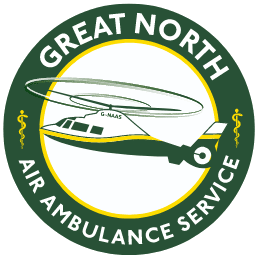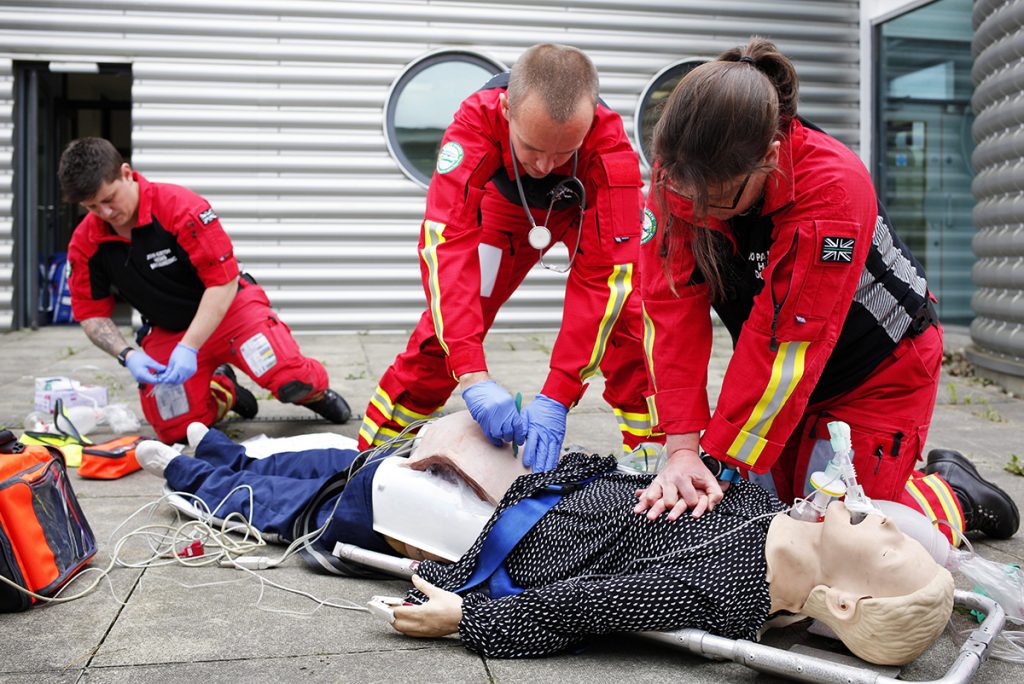Our helicopters are a familiar sight and sound across the region, but do you know how our team are called into action? Here we explain what happens behind the scenes.
999 emergency call handlers and dispatchers
Emergency and urgent care calls from people who dial 999 services are not answered directly by our team. Instead, emergency call handlers in the control rooms at North East Ambulance Service (NEAS), North West Ambulance Service (NWAS) and Yorkshire Ambulance Service will be the first point of contact.
They take essential details about the patient’s condition and location, logging the information onto a computer system. Depending on the situation, they may need to provide emergency advice, such as CPR, managing shock or dealing with a haemorrhage.
The information taken by the call handler is passed to an emergency medical dispatcher who oversees the area where the incident has happened, for example, Teesside or Durham.
The dispatcher uses a triage system to decide which staff and vehicles to dispatch, based on the severity of the situation and the resources available.
At this point, they might get in touch with our team and ask if they can be deployed to an incident. However, ultimately it is the decision of our dispatcher at the airdesk to decide if the critical care team need to attend.
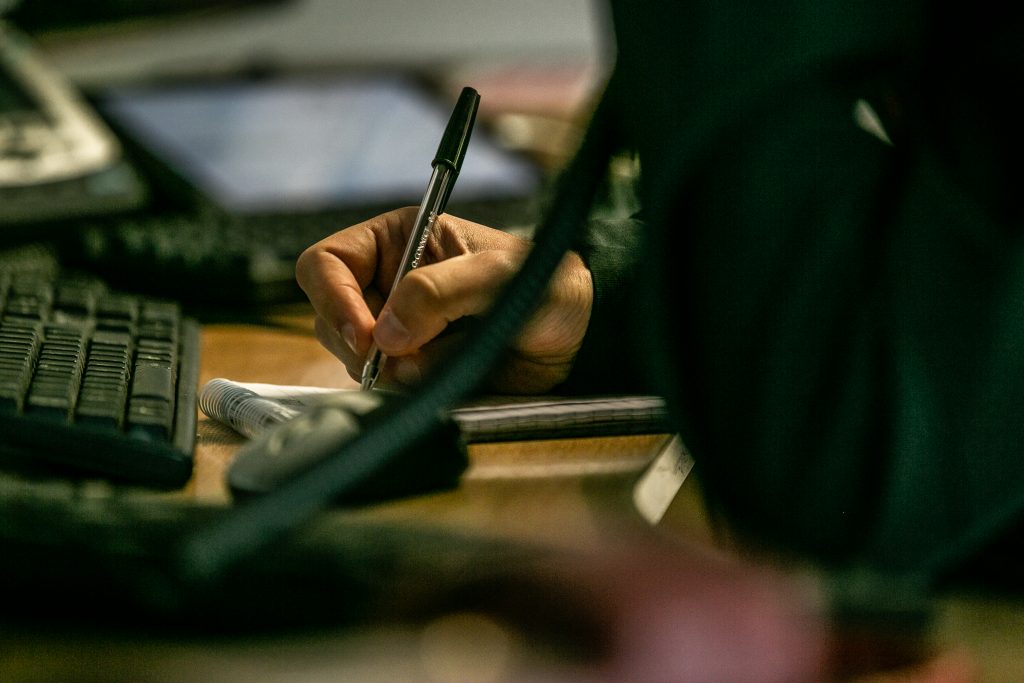

The GNAAS airdesk
At our headquarters near Eaglescliffe, we have a dedicated airdesk with several monitors displaying the 999 calls received by NEAS and NWAS from members of the public and ongoing incidents involving mountain rescue teams.
HEMS dispatchers
Until recently, the 999 calls were solely monitored by our paramedics, but this year we have employed two dispatchers whose main responsibility is to check the calls, which helps to free up our paramedic’s time to focus fully on increasing our clinical impact across our service.
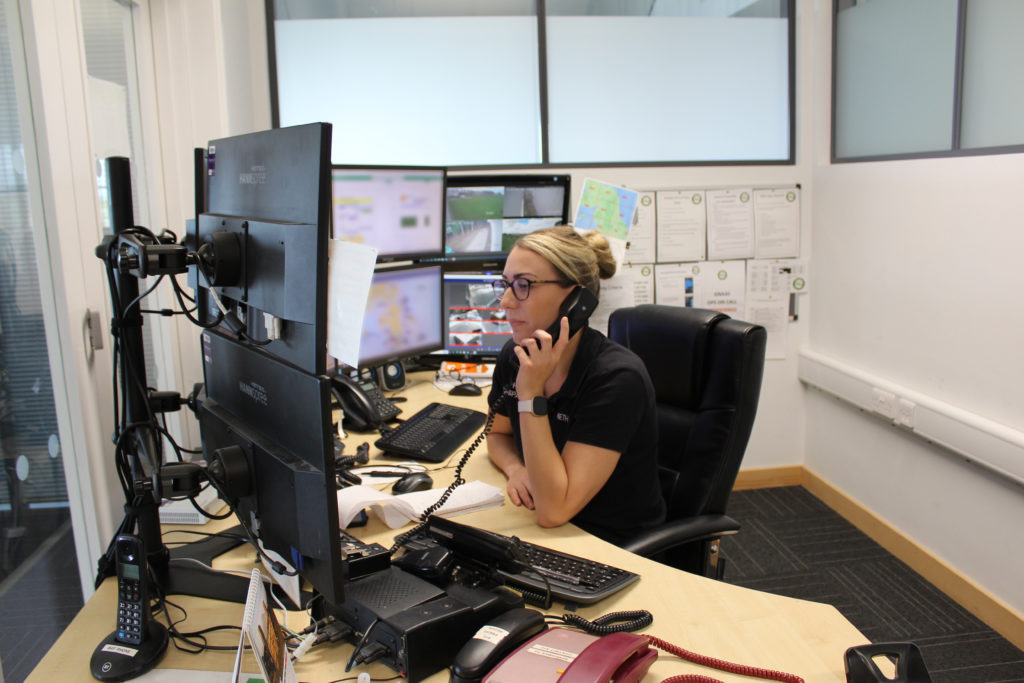

Call monitoring
Our team who monitor the calls look for reports of patients who are critically ill or injured and use the information provided to decide whether the patients would benefit from treatment provided by our critical care team. Once they’ve identified a patient that might require their help, they will contact the ambulance service and offer their assistance.
Alternatively, if the ambulance service requires GNAAS to attend an incident, they’ll call them on their emergency phone and ask them to immediately dispatch. The dispatcher will get more details by looking at the incident on the screen, and feed that information to the team attending the incident.
Call interrogation
The team not only monitors the calls but can also interrogate them. They can either passively listen to the caller as they give information to the call taker in the control room or actively interrogate the caller by phoning the caller back and asking them to confirm some of the details given. This can help inform the team’s decision on whether or not they attend the incident.
GoodSAM
Another way of gathering more information about an incident before deployment is using the GoodSAM service. This service allows the team to send a text message to the caller’s phone, which gives them access to their smartphone camera so they can get a live look at the nature and extent of injuries sustained by a patient, which can sometimes be difficult to describe over the phone.
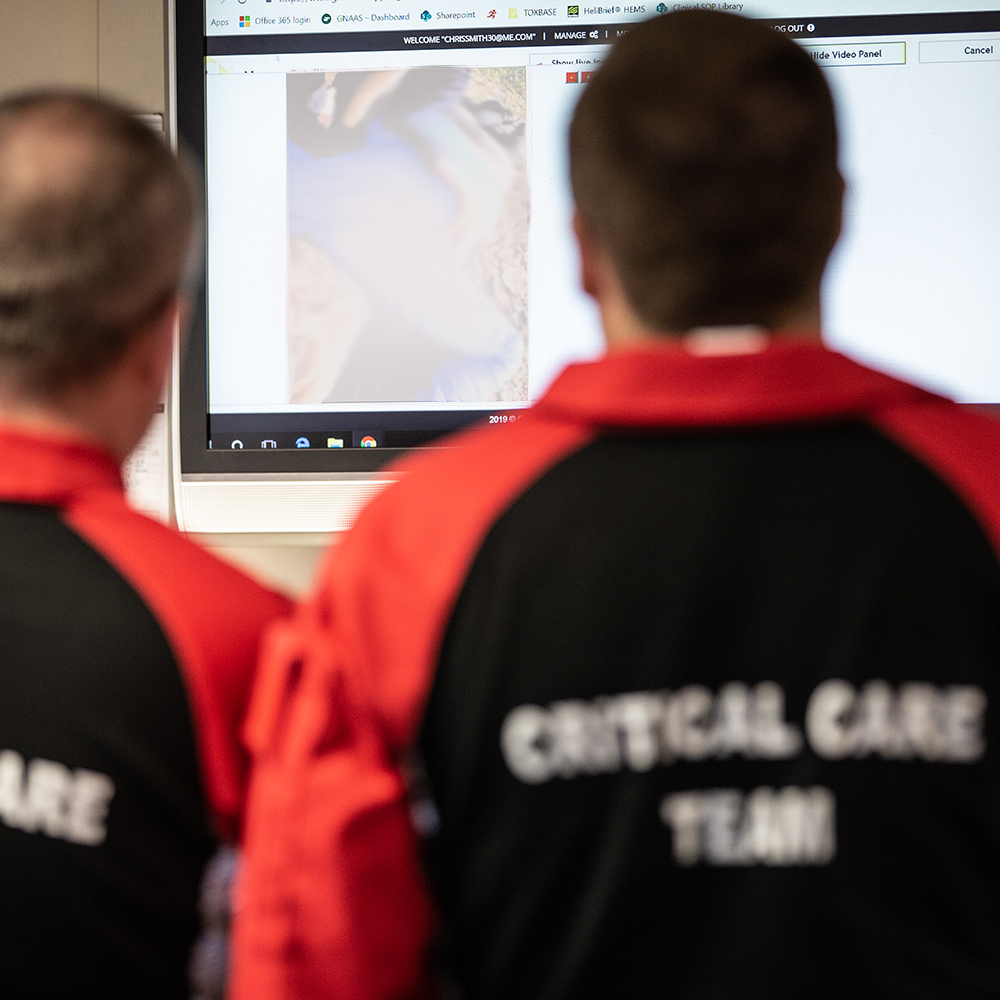

ARC
GNAAS use tasking system software called ARC, which means that when the team have tasked to an incident, ARC shows the location of the incident, which hospital is the closest, which aircraft to send and also provides the patient report form which will be filled in with information about everything the clinical team has done to help the patient and their findings.
Once the team have been deployed, the dispatcher at the airdesk can monitor the aircraft’s movements while the team attend an incident and pass any relevant information to them via radio. They will log notes on ARC such as what time the team were activated, when they arrived on scene to the patient and also the time they left.
If the team are taking a patient to hospital, the dispatcher will get in touch with the relevant hospital and provide details of the patient’s condition and their expected arrival time.
The information logged on ARC is incredibly useful as it provides a retrospective audit of each incident the team have been on, and helps them constantly improve the level of service they’re providing.
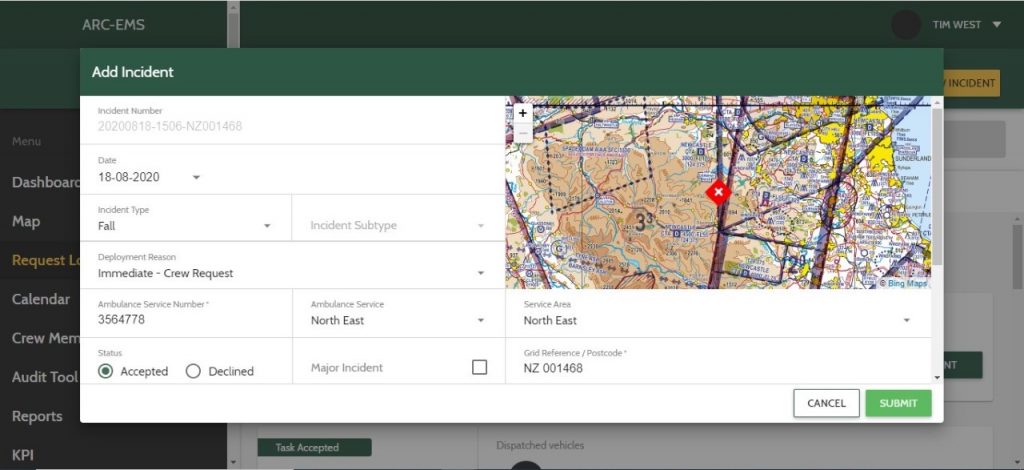

Incidents attended with NEAS and NWAS
Our critical care team work very closely with NEAS and NWAS, and many of our paramedics originally worked as part of their road crews before working on an air ambulance.
In the past year, between 1 August 2021 and 31 July 2022, our team have attended 693 call-outs with NEAS and 388 call-outs with NWAS.

